Best Database for Python: Unlocking Efficiency for Developers in 2025
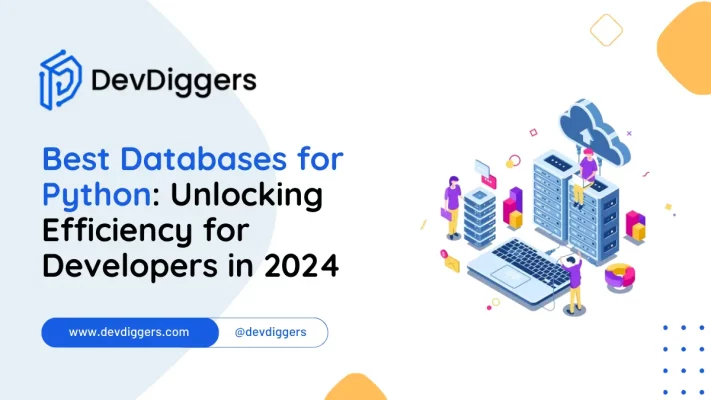
Picking the best database for a Python project is super important.
This blog post is all about helping you find the best database for Python, depending on what you need for your project.
We’ll look at different databases, from the ones that store data to the ones that only care a little about how data is structured.
We’re here to help you understand which database best fits your Python work, whether you’re making something simple or needing to handle a lot of data.
We’ll discuss how each database works with Python, what makes them unique, and why you might choose one.
So, if you’re wondering which database to use for your next Python project, you’re in the right place.
We’ll make it easy to understand the pros and cons of each option so you can pick the best database for Python that matches what you’re trying to do.
Why is a Database Needed for Python?
A database is crucial for Python applications, and selecting the best database for Python can significantly impact your project’s success.
Here’s why:
- Persistent Storage: The best database for Python offers a reliable way to store data over time. Your application’s information, like user data or transaction records, remains available even after the app shuts down or the device powers off.
- Structured Data Management: Choosing the best database for Python helps organize your data efficiently. Whether it’s a relational database for structured data or a NoSQL option for more flexible schemas, the suitable database makes managing, accessing, and updating your data easier.
- Performance: The best database for Python is optimized for fast data operations. This is essential for applications requiring quick searches, processing large data sets, or serving many users simultaneously.
- Scalability: As your Python application grows, so does its data. The best database for Python is designed to scale up to meet increasing demand, ensuring your application can handle growth smoothly.
- Data Integrity and Security: With the best database for Python, you get tools and features that maintain data accuracy and security. Transaction management and security protocols ensure your data is handled safely and responsibly.
- Insights and Analysis: The ability to store and analyze large volumes of data is another reason to choose the best database for Python. It allows for meaningful data analysis, helping to uncover insights that can drive decision-making and improve user experiences.
- System Integration: The best database for Python facilitates easy integration with other systems, enhancing data sharing and connectivity with third-party services or legacy systems.
In essence, selecting the best database for Python is about ensuring your application can efficiently handle data storage, management, and analysis.
It’s a decision that affects your project’s scalability, performance, and overall success.
Pick the Best Database for Python
The selection of the best database for Python projects largely depends on your specific needs, such as the project’s scale, data model, and performance requirements.
Here is a list of some of the most popular databases among Python developers, each known for its unique strengths and capabilities:
1. SQLite

SQLite can be the best Python database, especially for those who want a simple, efficient, and versatile storage option.
This open-source module offers a small, serverless SQL database engine, making it an excellent choice for various Python applications, including embedded systems, desktop, and web applications.
Its unique feature set and simple integration with Python make it the preferred choice for developers seeking an effective data storage alternative.
Features:
- Effortless Use: Simple to set up and manage.
- Built-In System: Operates directly within your app.
- All-Device Friendly: Compatible across various platforms.
- Space-saving: Minimal storage is needed.
- Trustworthy: Keeps data secure.
- Flexible Use: Fits a variety of project types.
Ideal For:
- Tiny Tech: Great for devices with limited storage.
- Quick Setup Projects: Easy and fast to get started.
- Solo Projects: Efficient data management for personal apps.
- Small-Scale Sites: Handles lower traffic well.
- Learning Purposes: Approachable for those new to databases.
2. PostgreSQL
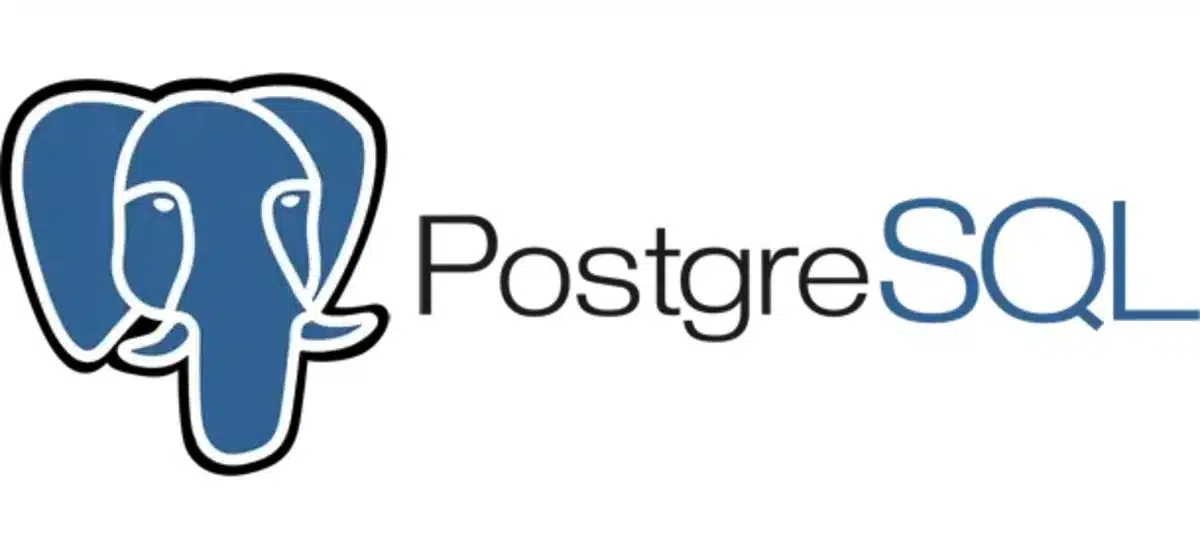
PostgreSQL, also known as Postgres, is a free database system that’s really good at handling all sorts of data. It’s been around for over 30 years and is known for being reliable and flexible.
People use it for everything from small personal projects to extensive, complicated systems, and it stands out as one of the best databases for Python.
Features:
- Reliable Transactions: It ensures all your data transactions are done correctly, keeping your data safe and sound.
- Handles Lots of Data Types: Whether you’re working with text, numbers, or even geographic locations, PostgreSQL can handle it.
- You Can Make It Your Own: It lets you add custom features or use different programming languages to make the database work just how you need it to.
- Fast and Smart: It’s designed to be fast, even when many use it simultaneously.
- Keeps Your Data Safe: It has many features to protect your data from unwanted access.
- Good at Geography: With an add-on called PostGIS, it’s great for projects that deal with maps or locations.
- Lots of Help Available: There’s a big community of users and lots of extra tools you can use.
Ideal For:
- Applications with Complex Data Requirements: Its strong data handling capabilities make it ideal for applications that require elaborate data analysis, detailed reporting, or the administration of complex data relationships.
- High-volume Web and Enterprise Projects: PostgreSQL’s capacity and scalability make it ideal for large-scale online platforms and essential business systems that require high data precision and availability.
- Custom-Built Systems: The database’s extensibility capabilities allow developers to create custom solutions that fit the database to specific operating requirements.
- Geospatial Projects: PostgreSQL excels in managing geospatial information, providing efficient mapping, location-based services, and spatial analysis.
- Scalable architectures requiring High Availability: Its broad set of replication and partitioning options means PostgreSQL can expand with your project, supporting everything from small applications to large-scale systems.
3. MySQL/MariaDB
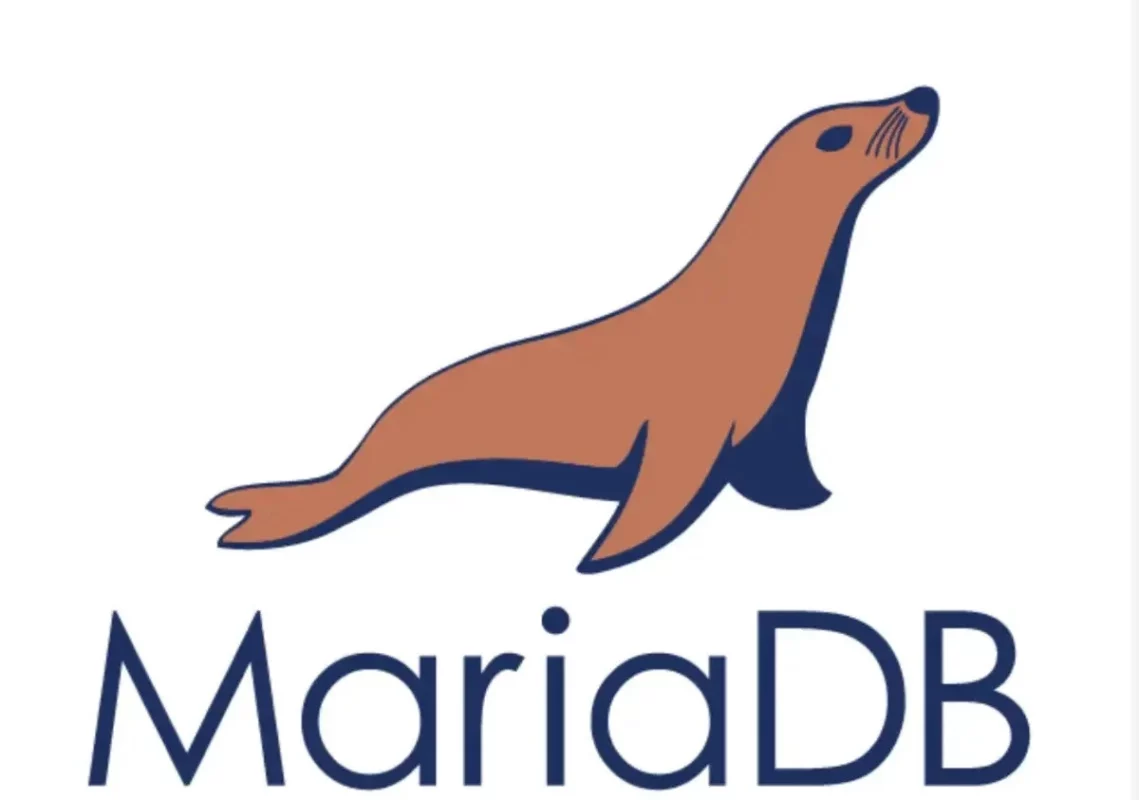
MySQL and MariaDB stand out as two of the foremost relational database management systems (RDBMS), which can be the best database for Python, are extensively utilized across web development and are foundational databases for Python-based projects.
Under Oracle Corporation’s stewardship, MySQL and MariaDB, an open-source derivation initiated by MySQL’s original creators, prioritize open access under the GNU GPL, aiming for freedom and accessibility.
Features:
- Interchangeability: MariaDB’s architecture guarantees backward compatibility with MySQL, facilitating effortless migration without requiring application modifications.
- Enhanced Performance: Both databases excel in performance tuning for diverse scenarios, including complex query execution, voluminous database management, and simultaneous data operations.
- Data Replication: They support data duplication across several servers through master-slave replication, enhancing data redundancy, backup solutions, and scalability.
- Diverse Storage Solutions: With various storage engines at their disposal, developers can select the most fitting engine for their specific needs, whether it’s InnoDB for transaction-heavy applications or MyISAM for read-centric tasks.
- Robust Security Measures: Comprehensive security protocols, including encrypted communications, SSL support, and detailed access control, safeguard data against unauthorized access.
Ideal For
- Web Development: Given their robustness and reliability, MySQL and MariaDB are preferred for developing web applications, offering a solid base for managing web content, user information, and more.
- Content Management Platforms: Their efficiency and ease of use make them ideal for powering CMS platforms like WordPress, Joomla, and Drupal, managing everything from posts to user comments.
- Online Retail Platforms: They are expert at handling the dynamic needs of eCommerce websites, from managing extensive product catalogs to customer details and transaction records.
- Transactional Systems: For systems demanding meticulous transaction management and data integrity, the ACID-compliant InnoDB storage engine, prevalent in MySQL and MariaDB, provides an essential foundation.
4. MongoDB

MongoDB stands out as the best database for Python, especially suited for projects dealing with large, complex datasets.
Its main strengths lie in its flexible, JSON-like document storage, allowing for dynamic data models and easy change adaptability.
Features:
- Schema Flexibility: MongoDB’s schema-less nature is ideal for evolving project requirements.
- Scalability: It supports easy scaling through sharding and built-in replication.
- Performance: Optimized for quick read and write operations, with customizable indexing.
- Advanced Data Aggregation: Offers a robust framework for complex data operations.
- Rich Query Language: Facilitates complex queries and data manipulation.
Ideal For:
- Managing Big Data: Ideal for uses involving enormous, unorganized data sets.
- Real-Time Analytics: Provides the necessary speed for real-time processing and analytics.
- Content Management: Its adaptable pattern makes Managing various content types easier.
- Mobile Apps: Provide scalable support for data synchronization between devices.
- IoT Applications: Because of their flexibility and scalability, these are perfect for the variety of data IoT devices generate.
5. Redis
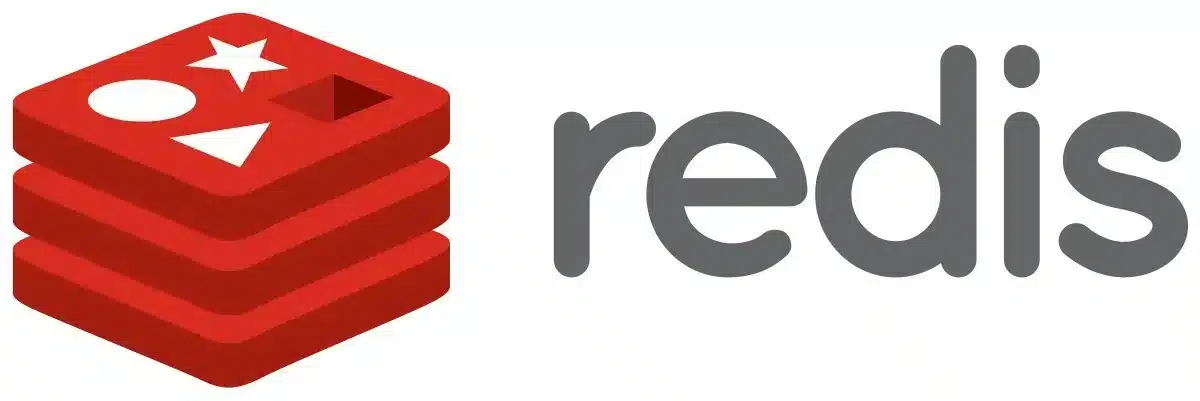
Redis is one of the best databases for Python, which is an intelligent way to store data using key-value pairs, which means it can quickly keep track of data like names, scores, or settings.
It’s built to work with data immediately, making it super speedy, but it can also make sure not to lose your data by saving it carefully.
Features:
- Fast: Because Redis works with data in memory, it’s quick and perfect for grabbing or changing data quickly.
- Complex Data Handling: Redis can manage more than just simple data; it can take complex stuff like lists, maps, and more, making it versatile.
- Scalability and Availability: Redis can expand its capabilities by copying data across servers or clustering to keep up as more people use your app.
- Data Persistence: Despite being speedy, Redis doesn’t play fast and loose with your data. It has ways to ensure data isn’t lost even if something goes wrong.
- Atomicity in Operations: Redis can also send messages between users in real time, making it great for chat apps or live updates.
- Customizable: You can add extra features to Redis so it does exactly what you need, like searching through data or linking things together in a graph.
Ideal For:
- Quickly Finding Stored Data: Redis is fast for keeping data you look up all the time, like website pages or app info, so you can get it quickly without waiting.
- Keeping Track of User Sessions: It’s suitable for saving user login info across different parts of a website or app, so users don’t have to log in again whenever they go to a new page.
- Seeing Data Change in Real-Time: Redis can handle lots of data super fast, making it perfect for watching things change immediately, like counting how many people visit a website or use an app.
- Organizing Tasks: Redis can help line up jobs that need to be done later, like sending out emails or processing pictures, so they’re done one after another without getting mixed up.
- Sending Messages Instantly: It’s great for apps where you chat or get updates immediately because Redis can send and receive messages quickly.
- Rankings and Scores: If you have a game or app where you need to show who’s winning or doing the best, Redis can help sort and show these rankings fast.
- Finding Places Near You: Redis can work with maps and locations, helping you see things close to you, like stores or friends, really quickly.
6. Elasticsearch
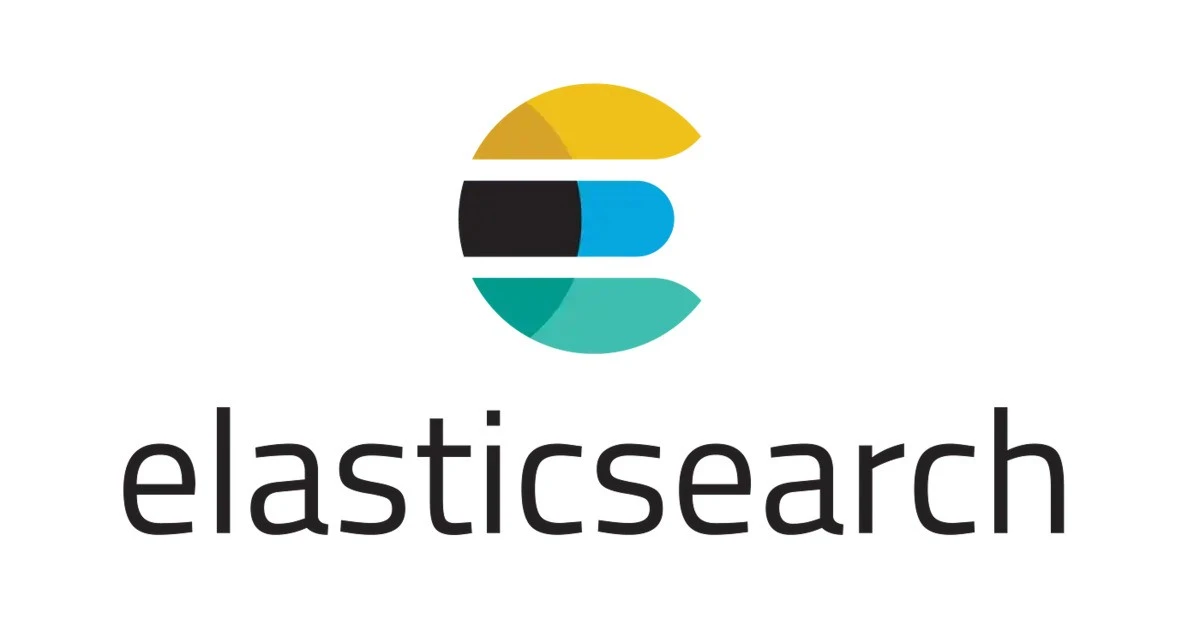
Elasticsearch stands out as a premier choice for those seeking the best database for Python, particularly when advanced search and real-time analytics capabilities are required.
This open-source, full-text search and analytics engine quickly handles large datasets, providing near real-time search and analytics functionality.
Features:
- Advanced Search Capabilities: Elasticsearch is engineered for sophisticated search tasks, supporting a vast array of search queries, including text, phrase matches, and auto-suggestions, and is adept at handling searches in various languages.
- Scalability: Its design allows for easy horizontal scaling, spreading operations across several servers to improve performance and capacity.
- Real-Time Insights: Capable of providing instant insights from data, it’s an ideal tool for dashboards and monitoring systems that rely on up-to-the-minute data.
- Resilience and Availability: The engine’s distributed nature ensures data is replicated across nodes, minimizing the risk of loss and ensuring continuous availability.
- Versatility: Elasticsearch can manage different data types, be it structured, unstructured, or semi-structured, like texts, numbers, and geospatial data.
- User-Friendly API: It offers a comprehensive RESTful API for straightforward management and manipulation of data.
Idea For:
- Sophisticated Search Requirements: Perfect for applications demanding complex search functionalities, such as faceted and geospatial searches or real-time search suggestions.
- Analysis of Log and Event Data: Its capacity for aggregating and analyzing logs or events makes it invaluable for system monitoring and operational intelligence.
- Immediate Data Analysis: Ideal for any application requiring rapid data analysis and visualization, including real-time monitoring and alerting systems.
- Content Search at Scale: For services needing efficient search capabilities across extensive content databases, Elasticsearch’s scalable architecture ensures high performance and responsiveness.
7. Cassandra

Apache Cassandra is a NoSQL distributed database system optimized for storing and managing large data volumes over numerous commodity servers.
It ensures high availability without a single failure point.
Cassandra departs from traditional relational database structures; it includes all the features needed for the best database for Python, which provides for embracing a column-family model that supports a flexible schema for efficient data storage and fast retrieval, scalable across many nodes.
Features:
- Distributed Design: Built to manage large-scale data across many servers, Cassandra eliminates single failure points, facilitating scalable and redundant data management.
- Superior Performance: It achieves high throughput for read and write operations throughout the cluster, maintaining performance as it expands.
- Scalability: Excelling in horizontal scalability, Cassandra allows adding nodes without downtime, smoothly enhancing capacity and performance.
- Resilience: With advanced fault tolerance, it replicates data across multiple nodes and locations, ensuring data remains accessible despite node or network failures.
- Schema Flexibility: Its column-family approach allows for dynamic control over data schema, suitable for applications with evolving data structures.
- Configurable Consistency: Cassandra provides adjustable consistency levels for operations, allowing developers to optimize consistency, availability, and partition tolerance based on application requirements.
Ideal For:
- Handling Massive Data Volumes: Cassandra’s architecture makes it the best choice for Python applications tasked with storing and processing petabytes of data.
- Demanding High Throughput: Applications needing swift and efficient write and read operations, such as those processing real-time analytics, will find Cassandra’s capabilities indispensable.
- Global Data Replication: With its natural ability to replicate data across multiple data centres, Cassandra suits applications needing global availability and low latency access to data.
- Requirement for Scalability and No Downtime: Cassandra’s fault-tolerant and scalable nature is critical for services that must remain online and scale with user growth.
- Evolving Data Models: Projects with dynamic data models benefit from Cassandra’s schema flexibility, accommodating changes without significant maintenance or service interruptions.
8. DynamoDB
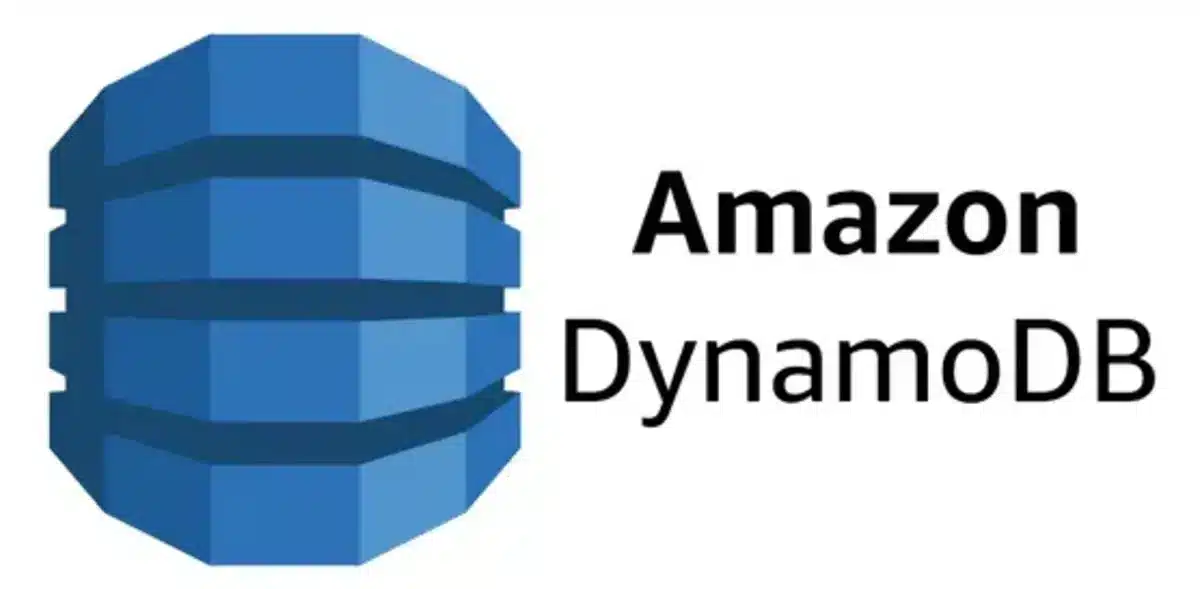
DynamoDB, offered by Amazon Web Services (AWS), stands out as one of the best databases for Python applications, especially for those seeking an effective, scalable, and managed NoSQL solution.
This service is designed to deliver consistent, single-digit millisecond performance at any scale. It is ideal for various applications, from web and mobile backends to gaming and IoT systems.
Features:
- Ease of Management: DynamoDB eliminates the operational burden of managing a database by automating hardware provisioning, database setup, configuration, and backups, allowing Python developers to concentrate on building their applications.
- Automatic Scaling: It dynamically adjusts its capacity to maintain performance levels without manual intervention, ensuring your Python application can efficiently handle varying workloads.
- High Performance: Thanks to its optimized design, DynamoDB ensures quick response times, often in the millisecond range, regardless of the scale of operations, which is crucial for applications requiring immediate data access.
- Security Measures: DynamoDB includes essential security features like encryption at rest to safeguard your data while seamlessly integrating with AWS’s comprehensive security model.
- Worldwide Distribution: Its global tables feature replicates data across multiple AWS regions, reducing latency by providing faster access to data, a key advantage for international Python applications.
- Real-Time Data Processing: Integrating with DynamoDB Streams enables real-time monitoring and processing of data changes, facilitating complex workflows and immediate data synchronization across different services.
Ideal For:
- Applications with Global Reach: DynamoDB’s global tables provide a distributed data solution that maintains data close to consumers for Python applications that need to serve a global audience with low latency.
- Serverless designs: DynamoDB is a great fit for Python developers working on serverless designs, mainly because it integrates with AWS Lambda and other AWS services to create a smooth serverless ecosystem.
- Dynamic Workloads: DynamoDB’s ability to change automatically makes it perfect for applications with dynamic workloads, whether you must grow your application fast or deal with unpredictable traffic.
- Microservices-based systems: DynamoDB may function as a highly available, scalable database for every small service in systems with a microservices architecture, enabling the independent development and scalability of individual components.
- Analytics in Real Time: Python applications that require immediate data analysis can use DynamoDB Streams to capture and process data changes in real time, enabling quick decision-making and responsive analytics.
9. Neo4j

At its core, one of the best databases for Python is Neo4j, which is a graph database designed to store and navigate data through nodes (entities), edges (relationships), and properties (information), making it uniquely efficient for queries that involve deeply connected data.
This structure allows for rapid execution of complex, relational queries that might slow down traditional databases.
Features:
- Advanced Data Relationship Management: Neo4j’s architecture is designed for handling densely interconnected data, enabling direct, fast access to the relationships that matter in an application.
- Cypher Query Language: With its query language, Cypher, Neo4j simplifies querying graph structures, allowing for straightforward expression of hierarchical and relational queries.
- Optimized Performance: Its graph-centric approach offers superior performance for depth-based queries, supported by a storage system and indexing optimized for graph traversal.
- Scalable Architecture: Horizontal scalability allows Neo4j to grow with your data, maintaining performance across larger datasets by distributing the load across a cluster.
- Schema Flexibility: Neo4j offers a flexible schema, accommodating changes and evolutions in the data model with minimal friction.
- Reliable Transactions: It sticks to ACID principles, ensuring transactions are processed reliably and consistently.
Ideal For:
- Social Networking Platforms: Perfect for platforms where user interconnections form the foundation of the experience, from friendships to content interactions.
- Personalized Recommendation Systems: Ideal for generating tailored suggestions by analyzing user-item relationships and behaviour patterns.
- Fraud Detection Systems: Exceptionally useful in identifying unusual patterns that signify fraudulent activities by examining the web of transactions and relationships.
- Network and IT Infrastructure Management: Optimal for overseeing networks and IT frameworks, where the interconnectivity between components is critical for performance and security.
- Enhanced Search Capabilities: Utilize relational data to refine and improve search results, making them more relevant to the user’s context.
- Constructing Knowledge Graphs: Essential for applications that manage and query complex networks of data and relationships, such as in semantic web projects, content management, or artificial intelligence.
10. SQLAlchemy

SQLAlchemy serves as a bridge between Python programs and various databases and can be one of the best databases for Python, offering a unified interface to interact with multiple database types, from traditional relational databases like MySQL and PostgreSQL to more modern solutions.
It simplifies database manipulation by translating Python classes to database tables and Python function calls to SQL queries, allowing developers to focus on application logic rather than database syntax.
Features:
- Database Compatibility: It seamlessly integrates with numerous database systems, affirming its flexibility and broad applicability.
- Advanced ORM: Its sophisticated ORM layer enables the intuitive mapping of Python objects to database tables, facilitating a natural and efficient data-handling approach.
- Direct SQL Support: For scenarios requiring precise control, SQLAlchemy’s SQL expression language allows for crafting specific SQL queries, marrying the convenience of ORM with the power of raw SQL.
- Automated Schema Creation: Capable of auto-generating database schemas based on Python class definitions, easing the initial setup and ongoing maintenance of database structures.
- Migration Support: Works hand-in-hand with Alembic for smooth schema migrations, ensuring that database evolution is as painless as possible.
- Optimized Performance: Features like connection pooling and result caching are built in, enhancing performance and supporting scalability.
- Comprehensive Transaction Management: Implements a sophisticated transaction management system, ensuring data consistency and integrity across operations.
Ideal For:
- Complex Data Structure Projects: Ideal for applications with intricate data models, where an object-oriented approach to database interaction is preferred.
- Projects Requiring Database Flexibility: Perfect for situations where your application might need to switch database backends without extensive rewrites, offering unparalleled flexibility.
- Balancing ORM and Raw SQL Needs: These are for applications that demand the improvement of ORM for general data handling but also need the granular control offered by direct SQL queries for specific tasks.
- Scalability Needs: Its built-in mechanisms for managing database connections and optimizing queries make SQLAlchemy a strong candidate for large, scalable applications requiring effective database interactions.
Final Thoughts on Best Database for Python
In summary, choosing the best database for a Python project is all about your project needs.
For small projects, something simple like SQLite might be perfect. But if your project is more complex, you might need something more reliable like PostgreSQL or more flexible like MongoDB.
Tools like SQLAlchemy can also help because they make connecting your Python code with different databases easier.
Think about what your project has to do with data, how big it might get, and what unique things you need from a database.
The best choice is the one that fits your project well and makes your job as a developer easier.
Just like Python, if you are a PHP developer, look into the latest features provided by PHP 8.3.
FAQs About Best Database for Python
What does a database do in Python?
A database lets you quickly store, organize, and get back data in your Python projects. It’s like a digital filing cabinet for your app’s information.
Why is picking a suitable database important for Python projects?
Picking the best database for Python makes your app run smoothly, handle more users, and be more accessible to update. It matches your project’s needs and helps it grow without issues.
What kinds of databases can you use with Python?
With Python, you can use databases like relational ones (MySQL, PostgreSQL), NoSQL ones (MongoDB, Redis), and even simple in-memory ones for smaller projects.
Can Python work with databases on the cloud?
Yes, Python can work with databases stored online in the cloud by using special online tools or drivers that connect your app to the cloud database.
How do you choose the best database for Python?
Look at your project’s size, what kind of data you’re dealing with, how fast you need it to run, and what your team knows how to use. Also, consider special features you might need.

Kartika Musle
A Tech enthusiast and skilled wordsmith. Explore the digital world with insightful content and unlock the latest in tech through my vision.

Leave a Reply